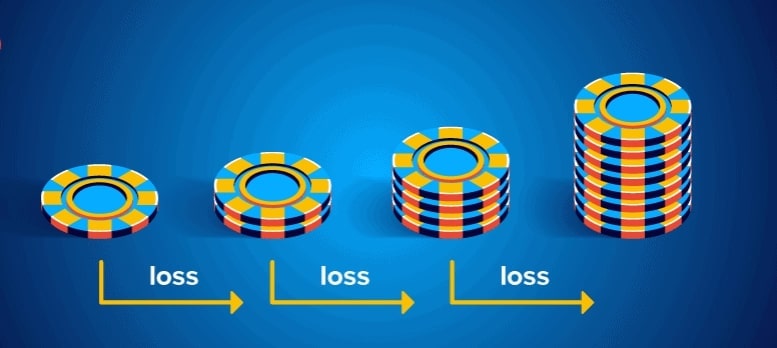
Martingale Betting Strategy
Roulette has long been a captivating game of chance, enticing players with the thrill of the spinning wheel and the potential for substantial winnings. In the quest to gain an edge, players have devised various strategies, and one strategy that has gained popularity is the Martingale betting strategy. In this article, we will explore the fundamentals of the Martingale strategy, its application in roulette, and its pros and cons.
The Martingale strategy is a progressive betting system that traces its roots back to 18th-century France. It is primarily used in games with even-money bets, such as red or black, odd or even, or high or low in roulette. The principle behind the Martingale strategy is deceptively simple: after each loss, you double your bet in an attempt to recover previous losses and make a profit. The concept is based on the belief that, statistically, a win is bound to happen eventually, thereby offsetting all prior losses.
The Mechanics of the Martingale Strategy
To grasp the Martingale strategy, let’s consider an example using an even-money bet in roulette, such as betting on red or black. Suppose you start with a base bet of €10 on red. If you win, you pocket your winnings and start again with the base bet. However, if you lose, you double your bet to €20 on the next spin. The idea is that when you eventually win, the profit from that win will not only cover your previous losses but also generate a net gain.
Proponents of the Martingale strategy argue that since the probability of winning an even-money bet is close to 50%, it’s only a matter of time until you win. They believe that by doubling your bet after each loss, you can recoup your losses and come out ahead. However, it’s important to approach this strategy with caution and consider some key points.
Advantages and Drawbacks of the Martingale Strategy
One of the main advantages of the Martingale strategy is its simplicity. It’s easy to understand and implement, making it accessible to players of all experience levels. Additionally, the potential for quick recovery after a win is appealing, as it offers the possibility of turning a profit in a relatively short timeframe.
However, the Martingale strategy is not without its drawbacks. One significant drawback is the need for a substantial bankroll. As bets double after each loss, a series of consecutive losses can quickly deplete your funds. Without a sufficient bankroll, it becomes challenging to recover and continue the strategy effectively.
Another critical consideration is table limits. Most roulette tables have minimum and maximum bet limits. When using the Martingale strategy, the bet amounts can escalate rapidly, potentially reaching the table’s maximum bet limit. Reaching this limit can disrupt the progression of the strategy and render it ineffective.

Implementing the Martingale Strategy Wisely
To maximize the potential of the Martingale strategy and mitigate its risks, it’s crucial to implement it wisely. Here are some key tips to consider:
- Establish a Bankroll: Start with a sufficient bankroll that can withstand a streak of consecutive losses. A larger bankroll provides more opportunities to recover and continue the strategy.
- Set Loss Limits: Determine a predetermined number of consecutive losses or a specific loss limit that signals when to stop using the Martingale strategy. This approach helps prevent significant financial losses and promotes responsible gambling.
- Choose the Right Table: Select roulette tables with suitable minimum and maximum betting limits. The minimum bet should allow for effective implementation of the strategy, while the maximum bet should accommodate the progression of doubling bets.
- Exercise Patience: The Martingale strategy relies on the statistical probability of eventually winning. It’s essential to remain patient, disciplined, and avoid chasing losses or deviating from the strategy in moments of frustration.
The Martingale betting strategy offers an intriguing approach for roulette players seeking to recover losses and potentially turn a profit. While it’s enticing to believe in the strategy’s ability to recoup losses, it’s important to approach it with caution and understanding. The Martingale strategy requires careful bankroll management, consideration of table limits, and the acknowledgement that no strategy can guarantee consistent wins. By implementing the strategy wisely and responsibly, players can enhance their roulette experience and potentially improve their chances of success. Remember to gamble responsibly and enjoy the excitement of the game within your means.
